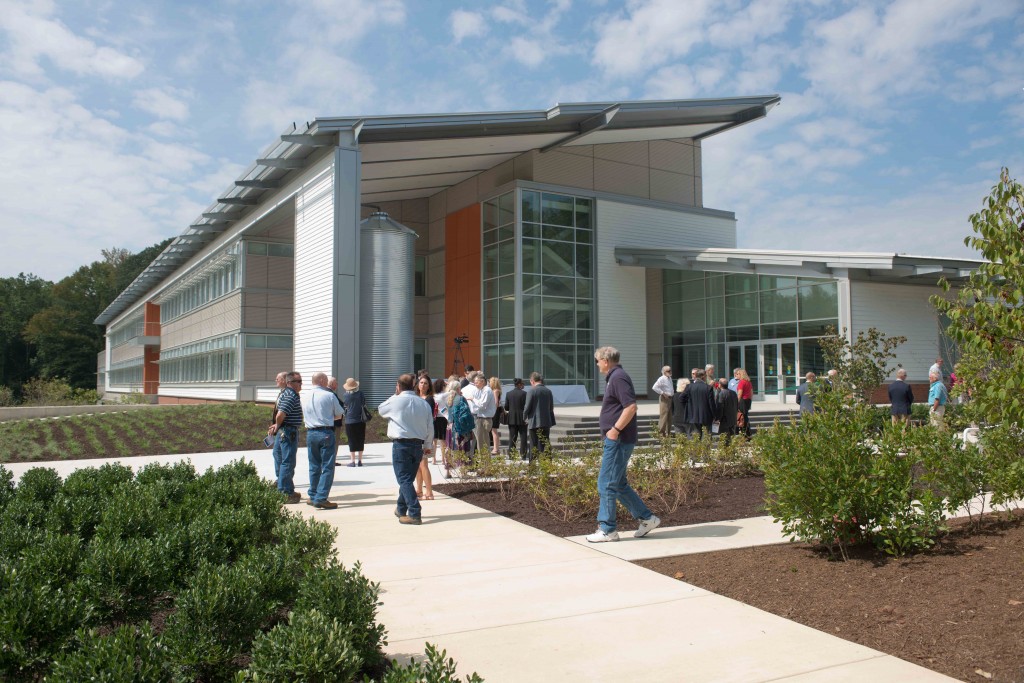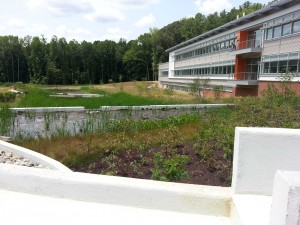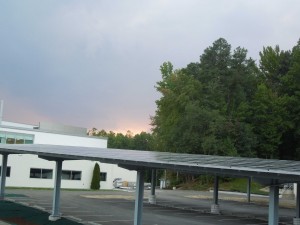by Kristen Minogue
On September 19, the doors officially opened inside what’s targeted to be the Smithsonian’s first LEED-Platinum building: the Charles McC. Mathias Laboratory at the Smithsonian Environmental Research Center.
The vision for a more sustainable lab emerged in the 1990s. Six years ago, SERC director Tuck Hines shared the idea with the then-new Secretary of the Smithsonian, Wayne Clough, on his first visit to the SERC campus.
“Tuck’s enthusiasm was infectious, and I told him then and there, you have my full support. We have to get this done,” Clough said. “But back then, it was just a dream….Today, six years from that first discussion, we’re here today to say, the dream has been fulfilled.”
Building a green research laboratory was more difficult than building a green home, office space or school. Research environments are highly energy intensive and typically consume three-to-four times as much electricity as other buildings. However, the discoveries of SERC scientists are vital to preserving Chesapeake Bay and ecosystems throughout the world. The challenge for lead architect Howard Skoke of EwingCole was to enhance these projects while slashing their environmental footprint.
Three and a half years of construction later, the numbers tell the story: The new Mathias Lab emits 37 percent less CO2—and saves an estimated 42 percent on energy costs—compared to a similar lab that does not meet LEED certification standards (Leadership in Energy and Environmental Design), making it the greenest Smithsonian building to date.
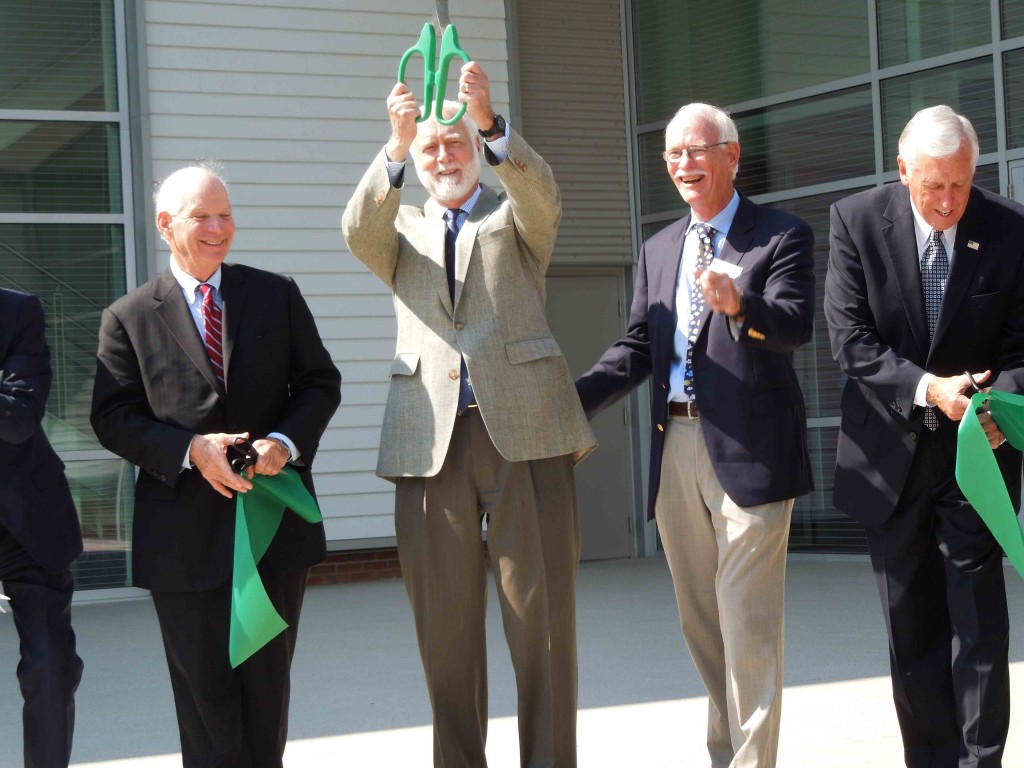
Left to right: Sen. Ben Cardin, Wayne Clough, Tuck Hines and Rep. Steny Hoyer. (Kristen Minogue/SERC)
The lab’s reduced carbon footprint comes from a heavy emphasis on renewables. A geothermal well field with 250 wells provides highly efficient heat exchange for the lab’s HVAC system, while a 352-kilowatt array of solar panels provides water heating and covers 15 percent of the building’s annual electricity expense. Energy efficiency received a boost from passive solar lighting, a result of its open interior design and large windows, as well as automated lighting controls and strong insulation.
The lab will also recycle 100 percent of its water through an interconnected network of systems. All domestic “gray water” will go to a wastewater treatment plant on the SERC campus within walking distance of the lab. From there, it will be sent back to the lab for reuse in fire protection, irrigation and the water-closet supply. Some of the water will nourish the 4.5-acre constructed wetland on the lab’s south side. Three cisterns will capture rainwater to irrigate the wetland, which will filter stormwater and provide a living habitat for native plants and animals.
View breakdown of the lab’s green features >>
But the Mathias Lab is more than a success story in green building. Before its creation, almost two-thirds of SERC’s office space and one-fourth of its lab space were housed in trailers. The disjointed environment hindered communication and the kind of experiments scientists were able to do.
“The new lab provides us flexible space for future cutting-edge research,” said director Tuck Hines.
“Biogenomics, conservation biology, global change—these are all at the forefront of environmental science today. The new lab gives our scientists the ability to explore new territory in a more sustainable way.”
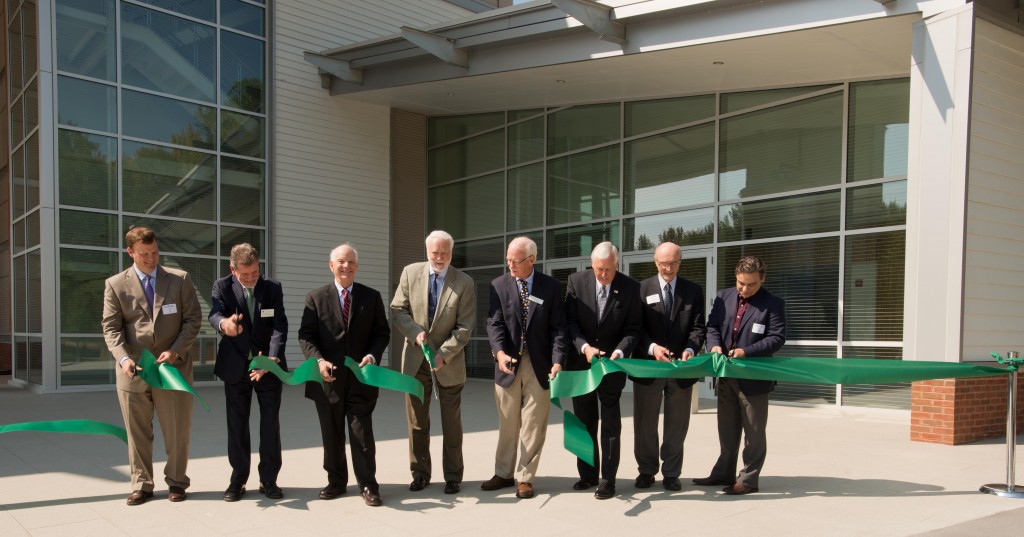
Left to right: William Thompson, John Kress, Sen. Ben Cardin, Wayne Clough, Tuck Hines, Rep. Steny Hoyer, David Longnecker and Howard Skoke. (SERC)
The lab takes its name from Charles “Mac” Mathias, a Republican Congressman and senator from Maryland. In addition to supporting SERC, Mathias helped created the Chesapeake Bay program in 1983.
“Mac Mathias recognized that the Chesapeake Bay is a bridge for our state,” said Congressman Steny Hoyer (D-Md.), who attended the ribbon-cutting ceremony. According to Hoyer, paying attention to science is just as vital today as it was in Mathias’ time. “This lab is critical in making sure that we understand the science and can fashion our policies based upon that science.”
“The science that’s being done here will help us deal with the issues of climate change,” said Senator Ben Cardin (D-Md.), who joined Hoyer at the ceremony. “It will deal with the challenges that we face in the Chesapeake Bay. It will deal with public health issues, as you understand the concerns of getting mercury out of our food chain. That’s the type of work that’s being done right here in our state that will benefit the Chesapeake Bay watershed and the 17 million people that live in that watershed.”
The majority of the project’s $57 million funding came from Congress. Construction began in May 2011 with the addition of 69,000 square feet of new laboratory and office space. Renovation of the existing 23,000-square-foot laboratory completed the project in fall 2014.
Learn More:
Mathias Lab Fact Sheet

